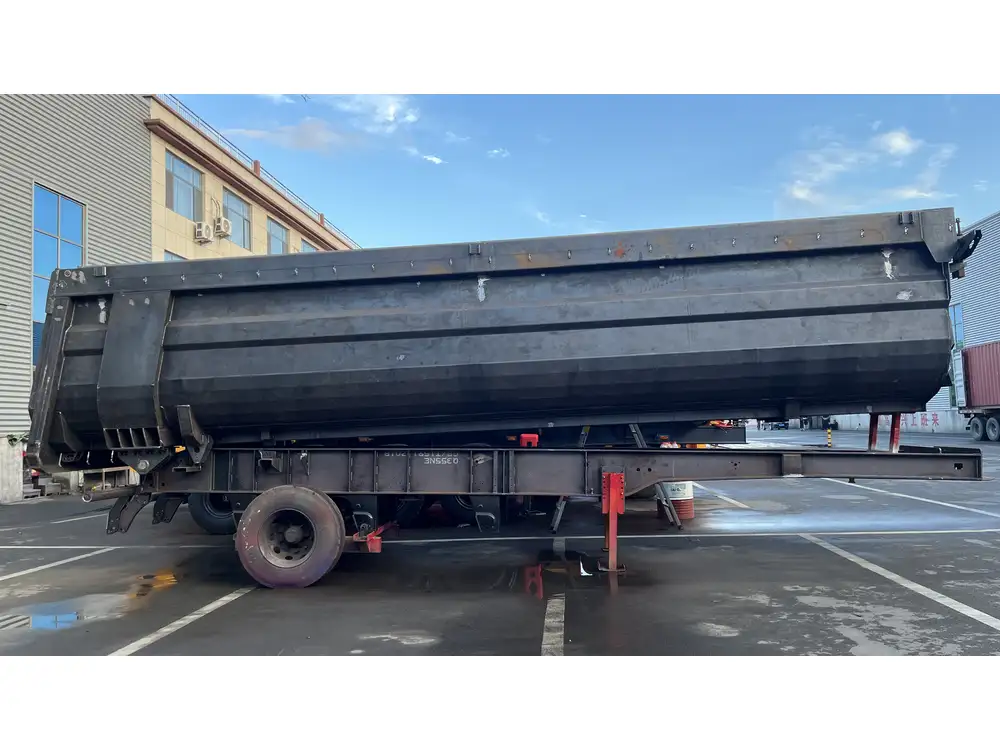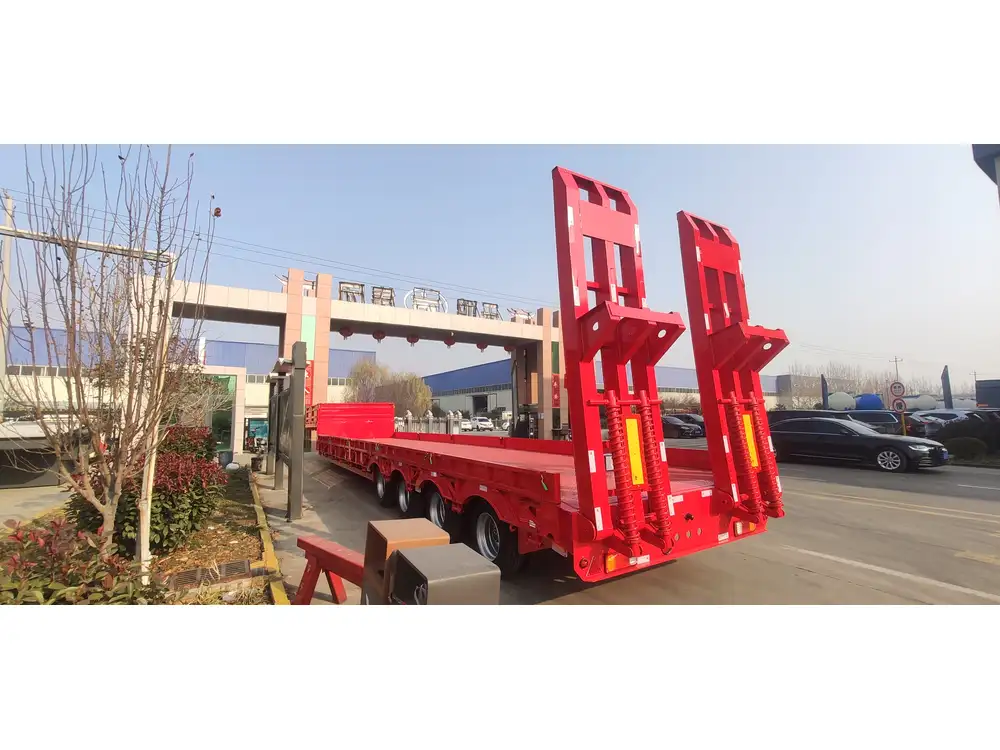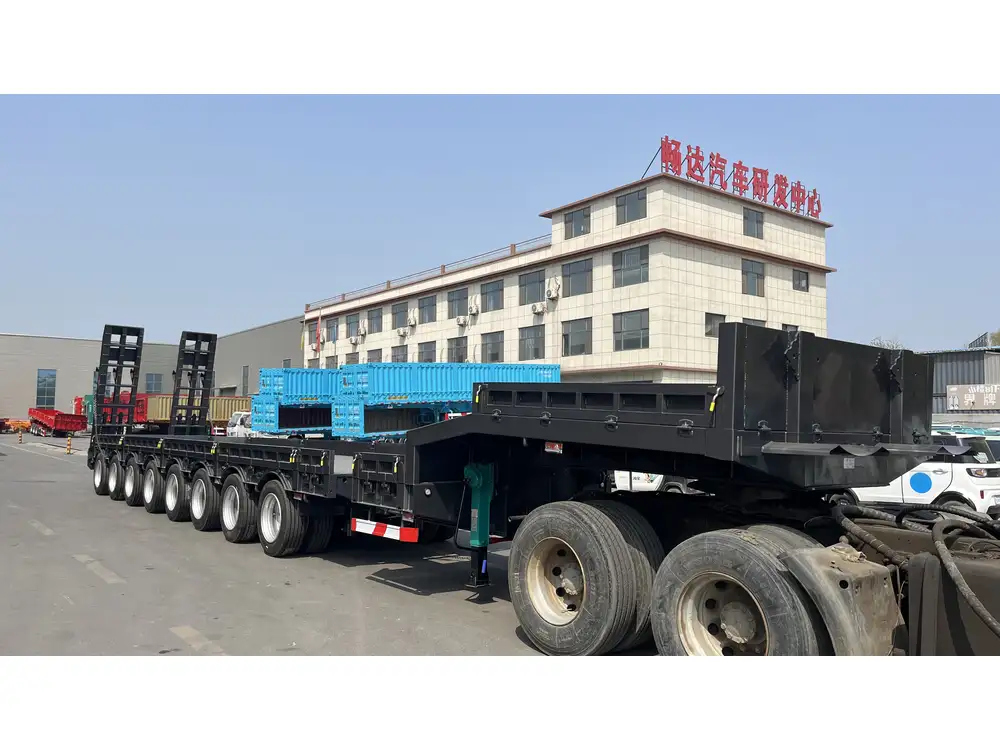When it comes to the logistics of trucking, one fundamental aspect often overlooked is the fuel tank capacity and configuration of tractor-trailers. Understanding the specifics of how many gas tanks a tractor-trailer holds, as well as their capacities, can significantly impact operational efficiency, cost management, and route planning. This exhaustive guide delves deep into the world of tractor-trailer fuel tanks, offering insights into configurations, capacities, and best practices for maximizing utility.
Table of Contents
- Overview of Tractor-Trailer Fuel Tanks
- Common Configurations of Fuel Tanks
- 2.1 Single Fuel Tank
- 2.2 Dual Fuel Tanks
- 2.3 Custom Configurations
- Fuel Tank Capacities: What to Expect
- 3.1 Standard Capacities
- 3.2 Variability by Design
- Factors Affecting Fuel Tank Selection
- Operational Impacts of Fuel Tank Configuration
- Best Practices for Maintaining Fuel Tanks
- Conclusion
1. Overview of Tractor-Trailer Fuel Tanks
Tractor-trailers are indispensable in the transportation industry, often serving as the backbone of freight logistics. Central to their efficiency is the fuel tank system, which provides the necessary fuel to power these massive vehicles over long distances. Each tractor-trailer is typically designed to incorporate one or more fuel tanks, allowing for an extended range and reducing the frequency of refueling stops.

Why the Fuel Tank Configuration Matters
Understanding the configuration helps trucking companies optimize route planning, fuel management, and overall operational costs.
2. Common Configurations of Fuel Tanks
Fuel tank configurations can significantly vary based on the manufacturer and specific needs of the trucking operation. Below are the most common arrangements found in today’s tractor-tralers:
2.1 Single Fuel Tank
- Description: A single fuel tank system is typically mounted on one side of the tractor. This configuration is easier to maintain and install.
- Advantages:
- Simpler design, leading to lower maintenance costs.
- Lightweight, which can improve fuel efficiency.
- Disadvantages:
- Limited fuel capacity, which may necessitate more frequent refueling.
- Typical Capacity: Usually holds between 50 to 100 gallons.

2.2 Dual Fuel Tanks
- Description: This configuration consists of two tanks, usually one on each side, providing a more balanced weight distribution.
- Advantages:
- Increased total fuel capacity, often holding 200 to 300 gallons.
- Enhanced operational flexibility with a longer range between refuels.
- Disadvantages:
- More complex maintenance due to dual systems.
- Potentially higher installation costs.
- Typical Capacity:
- Each tank can hold 100 gallons or more depending on design.
2.3 Custom Configurations
- Description: Custom fuel tank setups can include additional tanks for specialized needs, such as alternative fuels or added range.
- Advantages:
- Tailored to specific trucking operations and fuel types.
- Optimized for weight distribution and load capacities.
- Disadvantages:
- Requires careful engineering and design, potentially increasing costs.
- Typical Capacity: Highly variable based on specific customer requirements.
3. Fuel Tank Capacities: What to Expect

3.1 Standard Capacities
Most semi-trailer fuel tanks have standard capacities, influencing how far a truck can travel on a single fill-up. The industry standard for fuel tank sizes typically ranges between 100 to 150 gallons per tank. In a dual-fuel tank setup, this means a total fuel capacity of 200 to 300 gallons.
| Configuration | Typical Capacity (Gallons) | Typical Use Case |
|---|---|---|
| Single Tank | 50 to 100 | Short-haul operations |
| Dual Tanks | 100 to 150 each | Long-haul operations |
| Custom Configurations | Highly variable | Specialized transportation needs |
3.2 Variability by Design
Fuel tank designs can vary from manufacturer to manufacturer, and even among different models from the same brand. Custom configurations can modify these capacities further, and considerations such as the tractor’s engine type and expected load will dictate the optimal tank sizes.
4. Factors Affecting Fuel Tank Selection
Several factors contribute to the decision-making process regarding which fuel tank setup is optimal for a given operation:
- Route Planning: Longer routes may necessitate larger tanks to minimize refueling stops.
- Load Capacity: Heavier loads may require more robust fuel systems.
- Fuel Type: Trucks running on alternative fuels, such as compressed natural gas (CNG), will require specialized tanks.
- Regulatory Requirements: Different states and countries have various regulations impacting fuel tank capacities and types.

Considerations
- Weight Distribution: Proper weight distribution is crucial for vehicle handling, especially in loaded conditions.
- Fuel Efficiency: A well-sized fuel tank can contribute to better fuel efficiency, reducing operational costs over time.
5. Operational Impacts of Fuel Tank Configuration
The choice of fuel tank configuration can have extensive implications for trucking operations:
Fuel Efficiency
A truck with a larger fuel capacity can travel longer distances without stopping for refueling. This reduces downtime and allows for more efficient scheduling.

Cost Management
Investing in a dual-tank system may appear more costly initially, but the long-term savings on fuel and time can far outweigh the upfront investment. Operational analyses often reveal significant savings for long-haul operators who have opted for larger tanks.
Environmental Considerations
More recent designs in fuel tanks have begun to factor in eco-friendly materials and technologies, including reduced evaporation emissions and better tank sealing, which contribute to overall environmental sustainability.
6. Best Practices for Maintaining Fuel Tanks
To ensure optimal performance and longevity of tractor-trailer fuel tanks, operators should follow several best practices:

Regular Inspections
Conduct routine inspections for leaks or corrosion. Catching problems early can prevent costly repairs and downtime.
Fuel Quality Management
Ensure that the fuel being used is clean and free from contaminants, which could harm vehicle performance.
Venting Systems
Proper venting systems help avoid pressure build-up, which can lead to fuel leaks or degradation of fuel quality over time.

Tank Cleaning
Periodically cleaning the inside of the fuel tank can prevent sediment build-up that can affect fuel efficiency and engine performance.
7. Conclusion
Understanding how many gas tanks a tractor-trailer holds, along with their capacities and configurations, is essential in making informed decisions that affect operational efficiency, fuel management, and overall profitability. Whether opting for a single tank or a more robust dual tank system, the configurations chosen will influence route planning, cost management, and sustainability. By keeping abreast of best practices for maintenance and management, trucking companies can ensure that their fuel systems remain efficient and effective, paving the way for a successful logistics operation in an ever-competitive industry.



